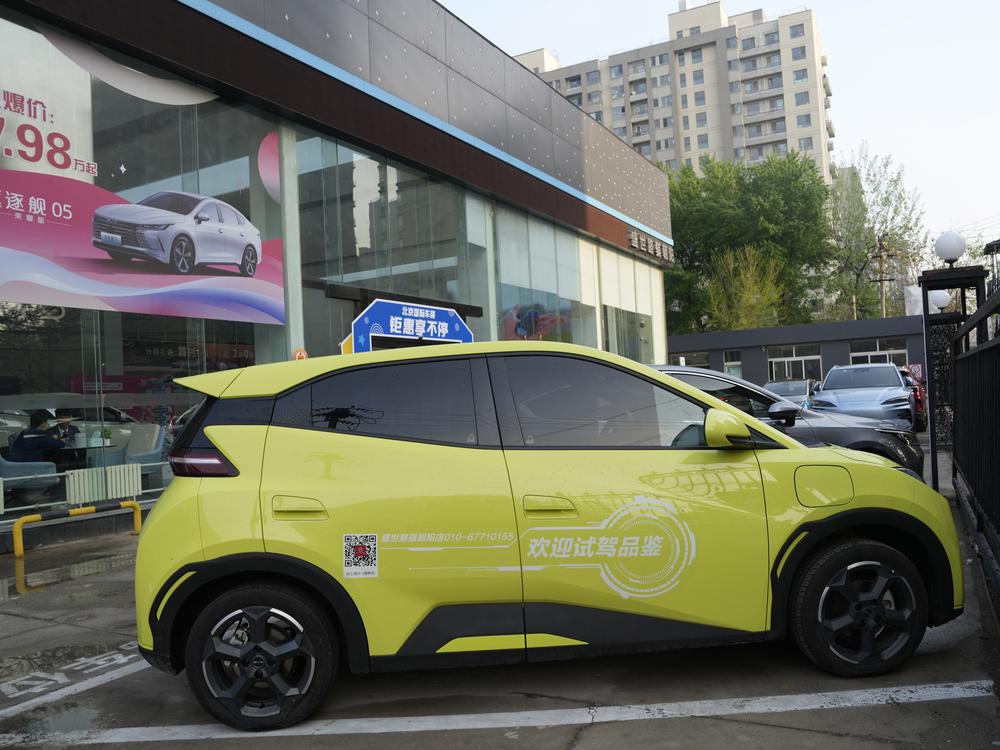Section Branding
Header Content
What Biden’s tariffs on Chinese EVs and other products mean for U.S. consumers, jobs
Primary Content
President Joe Biden is expected to finalize significant tariffs on some Chinese imports this week.
The taxes are a continuation of Donald Trump's tough-on-China trade policies. Both men have touted these kinds of tariffs as a way to protect American jobs.
But do they really?
Sanjay Patnaik, Director of the Center on Regulation and Markets at the Brookings Institution, told Morning Edition it’s a little more complicated because tariffs can actually lead to job losses and higher costs for U.S. consumers.
For starters, what is a tariff and how high are the new ones on China?
A tariff is basically a tax on imported goods that come from abroad, Patnaik said.
“So let's say we have a German car that is being manufactured in Germany, and as that car enters the U.S., [the importers] have to pay a tax or tariff at the border to the American government,” Patnaik said.
Biden’s new tariffs on China range from 100% tariffs on electric vehicles to 50% on solar cells and 25% on aluminum and steel products and respirators and face masks. Other hikes will go into effect in 2025 and 2026.
What have tariffs meant for the U.S. economy
Patnaik said the impact of tariffs is mixed and depends on the industry.
“When we look at the at the record of the Trump administration and the Biden administration in terms of tariffs, what we have seen so far is that the latest studies show that there is a net loss in jobs, at least of 140,000 to 275,000 jobs across industries and an increase in prices and additional costs that American consumers have to pay,” Patnaik said.
He added that this could continue with the tariffs that President Biden is considering in that the higher cost of these tariffs could be passed on to U.S. consumers.
Why tariffs can lead to job losses
Patnaik points to tariffs on steel that Trump placed on Chinese steel and aluminum during his presidency – which Biden kept.
The tariffs may have protected a few jobs in the U.S. steel industry, Patnaik said, but any company using the products would “have to pay higher prices and oftentimes they have to reduce output or they have to absorb those costs and cannot produce as much and might not be able to hire as many people as they would otherwise.”
Is there a way around concerns about China’s practices?
Ohio U.S. Sen. and Trump VP pick JD Vance defended the former president’s tariffs in an interview with NBC’s Meet the Press. Vance argued they were necessary because China’s practices undercut wages of American workers and that they wouldn’t raise costs for U.S. consumers.
But estimates show that American families paid upwards of a couple hundred dollars annually due to the tariffs, Patnaik said.
Trump’s tariffs cost Americans about $80 billion, according to an analysis from the nonpartisan Tax Foundation.
Patnaik added that if the U.S wants to rein in China economically, it should deepen its economic ties through more trade and free trade agreements with its allies.
“We currently do not, for instance, have a free trade agreement with Japan. We do not have a free trade agreement with the European Union or with the U.K., and I think that would be a very good way to deepen our ties with those allies and make sure that we have common market with our closest friends around the world because this could really provide a counterweight to China,” Patnaik said.
The U.S. and Japan do have a trade agreement focused on minerals needed for electric vehicle batteries that was signed last year but not a comprehensive free trade agreement, according to the Office of the U.S. Trade Representative.
This digital story was edited by Majd Al-Waheidi.

